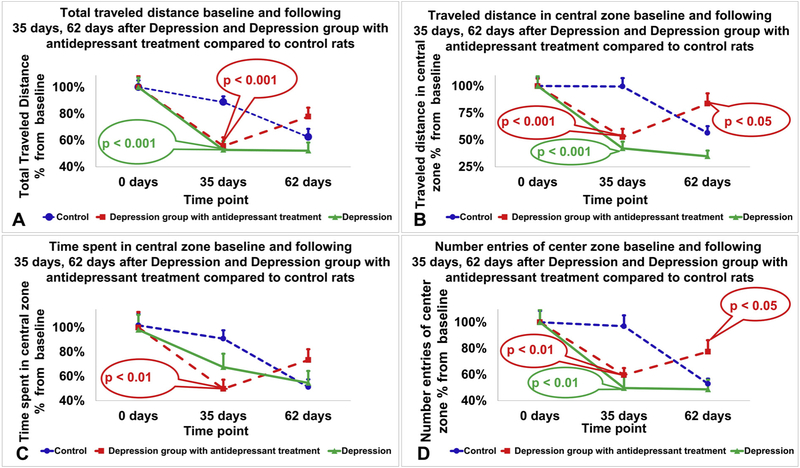Fig. 7.
Behavior parameters in the open field test. Total traveled distance (A), traveled distance in the central zone (B), time spent in the central zone (C) and number of entries in the central zone (D) on the open field test for the control group (blue), depression group (green) and depression group with antidepressant treatment (red). At 35 days, rats in the depression group had a statistically significant reduction in the total distance traveled (p < 0.001), distance traveled in the central zone (p < 0.001), and the number of entries in the center zone (p < 0.01) compared with their baseline values. Rats in the depression group that received antidepressant treatment had a statistically significant reduction in all parameters tested at 35 days compared to control rats, including total distance traveled (p < 0.001), distance traveled in the central zone (p < 0.001), time spent in the central zone (p < 0.01) and the number of entries in the center zone (p < 0.01). At 62 days, the control group showed a similar performance on the open field test as the depression group. Conversely, the rats in the depression group treated with antidepressant therapy exhibited behavior that resembled their baseline, demonstrating increases in traveled distance in the central zone and number of entries in the center zone compared to the control group (p < 0.05 and p < 0.05, respectively). Data is presented as an average percent difference from baseline ± standard error of tror of the mean.

